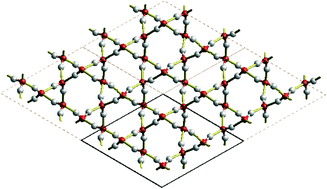Isomorphism between ice and silica†
Abstract
Both ice and

- This article is part of the themed collection: Solid State Structure Prediction
* Corresponding authors
a Thomas Young Centre, University College London, London, United Kingdom
b Computational Science, Department of Chemistry and Applied Biosciences ETHZ Zurich USI-Campus, Via Giuseppe Buffi 13, C-6900 Lugano, Switzerland
c Departament de Química Física and Institut de Recerca de Química Teorica i Computacional, Universitat de Barcelona, E-08028 Barcelona, Spain
Both ice and

 Please wait while we load your content...
Something went wrong. Try again?
Please wait while we load your content...
Something went wrong. Try again?
G. A. Tribello, B. Slater, M. A. Zwijnenburg and R. G. Bell, Phys. Chem. Chem. Phys., 2010, 12, 8597 DOI: 10.1039/B916367K
To request permission to reproduce material from this article, please go to the Copyright Clearance Center request page.
If you are an author contributing to an RSC publication, you do not need to request permission provided correct acknowledgement is given.
If you are the author of this article, you do not need to request permission to reproduce figures and diagrams provided correct acknowledgement is given. If you want to reproduce the whole article in a third-party publication (excluding your thesis/dissertation for which permission is not required) please go to the Copyright Clearance Center request page.
Read more about how to correctly acknowledge RSC content.
 Fetching data from CrossRef.
Fetching data from CrossRef.
This may take some time to load.
Loading related content
